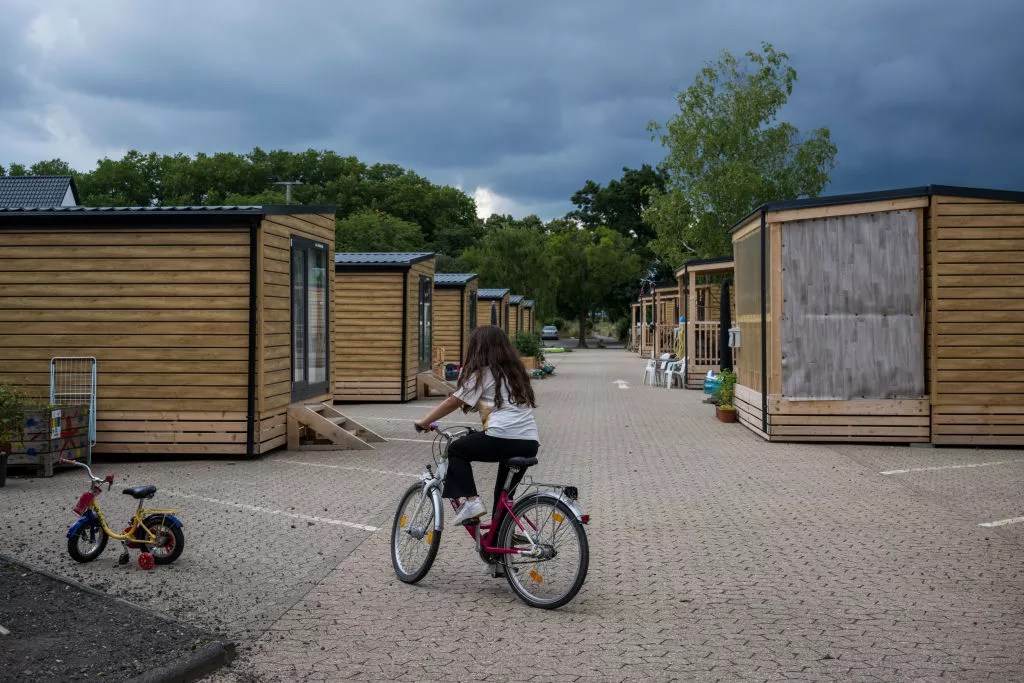
Thomas Lohnes/Getty Images

Audio By Carbonatix
The city of Dallas is considering funding the construction of tiny homes for the homeless.
Tiny homes are defined by the 2021 International Residential Code as “a single unit providing complete independent living facilities for one or more persons, including permanent provisions for living, sleeping, eating, cooking and sanitation.” Dallas requires that tiny homes be consistent with the international code, which defines them as being generally 400 square feet or less in area, with ceilings at least 6 feet, 8 inches high. Some think these homes could be a solution to housing the homeless. Now, Dallas might have some money to build them.
In March 2022, the Department of Housing and Urban Development (HUD) allocated almost $3 billion to be used for major disasters that occurred in 2020 and 2021.
Dallas was awarded $24.4 million last year, then in January HUD increased the amount of money it was sending the city by nearly $16 million. The City Council will discuss at its briefing today whether to use the money to for tiny homes.
These funds are usually allocated to the state, and this is the first time Dallas has received the money directly. Dallas got the money as a response to the February 2021 winter storm that caused statewide blackouts. This money is supposed to prioritize low- and moderate-income people and the most affected and distressed areas.
“Right now, I think any viable solution is better than no affordable housing being built.” – Lisa Marshall, Fighting Homelessness
While all of Dallas isn’t low- or moderate-income, the whole city is considered a most affected and distressed area. Whatever the money is used for should also principally benefit people who have low or moderate incomes, help prevent or eliminate blight and meet needs with a sense of urgency.
The money should also be used only for unmet recovery needs or mitigation activities, meaning it shouldn’t go toward duplicate financial assistance or be used to reimburse payments from another source.
Under all of these criteria, tiny homes can be built using the federal funds.
To get the money, the city has to develop a plan for spending it. Dallas is still working on that plan and considering whether it should include funding for tiny homes. The city has to submit its complete budget for the money to HUD by May 18, and the funds must be spent within six years of the grant agreement.
Tiny homes and something else called pallet homes are often viewed as creative housing solutions, but they’re met with mixed feelings. Pallet homes are shelters built from wood pallets or aluminum siding. There are pros and cons to both tiny and pallet homes.
Both may meet the needs of some homeless people, on a temporary basis at least. They can also be cheaper and easier on a temporary basis. On a more permanent basis, though, tiny homes are more expensive, according to the city. They can also take longer to build and are subject to more traditional building codes and standards. Pallet homes usually don’t have individual bathrooms or kitchens and do not meet national HUD habitability standards for permanent housing. Tiny homes usually do have these things, which is why they’re more expensive.
Both of these housing strategies also face some criticism for being inhumane. At their briefing, City Council members will be presented with examples of this criticism from news outlets including Vice Media. Vice has reported before on tiny homes being compared to jail cells, concentration camps and Hoovervilles.
Lisa Marshall, a local advocate who started the group Fighting Homelessness, said she’s open to the idea of tiny homes as long as wrap-around services are easily accessible. “Right now, I think any viable solution is better than no affordable housing being built,” Marshall said. “I just would hate to see them built far from services.”
District 12 City Council member Cara Mendelsohn, also a member of the Housing and Homelessness Committee, said Dallas hasn’t explored this type of housing before but she’s open to giving it a try. “I think it will allow people who are currently encamped in a place to safely sleep with supportive services available,” Mendelsohn said, but she’s not sure if the tiny homes are right for her district. “District 12, the second smallest district in Dallas, is 98% built out, so I don’t believe there is any land available,” she said. “However, we added a homeless shelter that has been at capacity since it opened.”
In 2020, the Dallas City Council and city staff agreed that every district should have a homeless facility. “The commitment was for all council districts to have a homeless facility, and that goal has not been reached yet,” Mendelsohn said. “Some of the districts without a homeless facility have significant vacant land. Perhaps this would be a good fit.”
After today’s briefing, the City Council will hold a public hearing for the funds at its April 12 meeting.